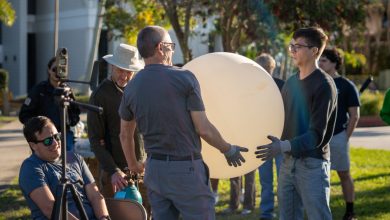Cross Shore Sediment Transport Time Lapse
By Masters Ocean Engineering Student Jeff Coogan and Dr Robert Weaver
Sandy shore lines are constantly being sculpted and transformed by waves as they break and dissipate their energy on the shoreline. The wave forces can be divided into either constructive or destructive forces causing accretion or erosion. Though these forces are always transforming the beach face these changes are small and slow, making them difficult to observe in real time. This video shows the cross shore sediment transport at a sped up rate allowing for the processes transforming the shoreline to be easily seen.
The first part of the video is 2 hours of 12.4 cm waves with a period of 1.3 seconds. These steep waves produce large destructive forces on the beach slope. The beaches response is to flatten out and does this by slowly eroding the berm (the dry portion of the beach). The eroded sediment is then transported offshore and built up as sand bars. Sand continues to erode, flattening the beach until the wave machine is stopped. The wave period is then changed and the height kept roughly the same producing longer, more gradual waves. These waves lasted 3 hours and 15 minutes and were 12.1 cm high at 3.1 seconds. These longer period waves produced more constructive forces which result in the sand from the bar being transported in a ridge and runnel system on shore. The sand from the bar is transported back onto the beach, producing accretion of the eroded shoreline until the beach face is back to the original wider, steeper profile.





